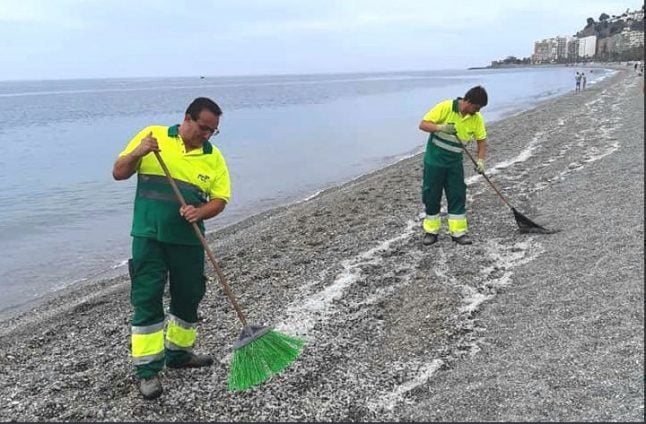They might be odd, but they're completely harmless.
They look a bit like plastic, but these creatures are barrel-shaped planktonic tunicate, known as salps.
Clean up teams have already started to remove them from the shores, but salps present no threat to humans, except for creeping us out!.
Las #salpas, salpa fusiformis, invaden las playas de #Málaga y #Granada.
A diferencia de las medusas, este organismo NO produce urticaria.
No debes hacerles daño, son inofensivos.pic.twitter.com/DCuT7EjqgM— Formación y Salud (@FormacionySalud) June 17, 2019
These gelatinous blobs, known as las salpas in Spanish and also ‘zapaticos’ , kind of look like jellyfish but without tentacles, but in fact, salps are more closely related to humans than they are jellyfish.
Hoy en las costas de #Granada están encontrando esto. No es plástico ni medusas, no es un ?. Es un tunicado llamado Salpa fusiformis (salpas). No son urticantes ni peligrosos, forman colonias y son hermafroditas. Se alimentan d fitoplancton No les hagáis daño. Son inofensivos ? pic.twitter.com/3DIG7tySjp
— Amara (@bioamara) June 16, 2019
They can reach up 30 centimetres long, but are more commonly washed up the size of a fingernail, they have a primitive backbone, which jellyfish lack.
Son salpas (Maggiore salpa) os las vais a encontrar en abundancia en las playas. No muerden, no pican, no hacen nada, son inofensivas. Os podeis bañar tranquilamente 🙂 pic.twitter.com/cApLjdoUsO
— 4LB3RT1C0 (@albertoelement) June 15, 2019
They are not to be confused with 'sea lice', a term that has been used to describe the larvae of tiny jellyfish that can sting and cause rashes.
Interestingly, it has been suggested that salp could be a secret weapon against climate change, because the algae that they eat uses carbon dioxide from the atmosphere to grow, meaning the salps end up consuming all that carbon.
This said, it is unlikely that salps will be able to keep up with the increased carbon in the atmosphere.
READ ALSO: Strange blue sea creatures wash up on Costa Blanca beaches
Thousands of these extraordinary creatures can currently be found on the Costa Tropical, the stretch of beaches between Granda province and Málaga, but they are not expected to stick around for long.
Changes in wind direction and sea currents tend to push salp towards the beaches, although salps move by contracting and pumping water through their transparent bodies.
By Alice Huseyinoglu



 Please whitelist us to continue reading.
Please whitelist us to continue reading.
Member comments